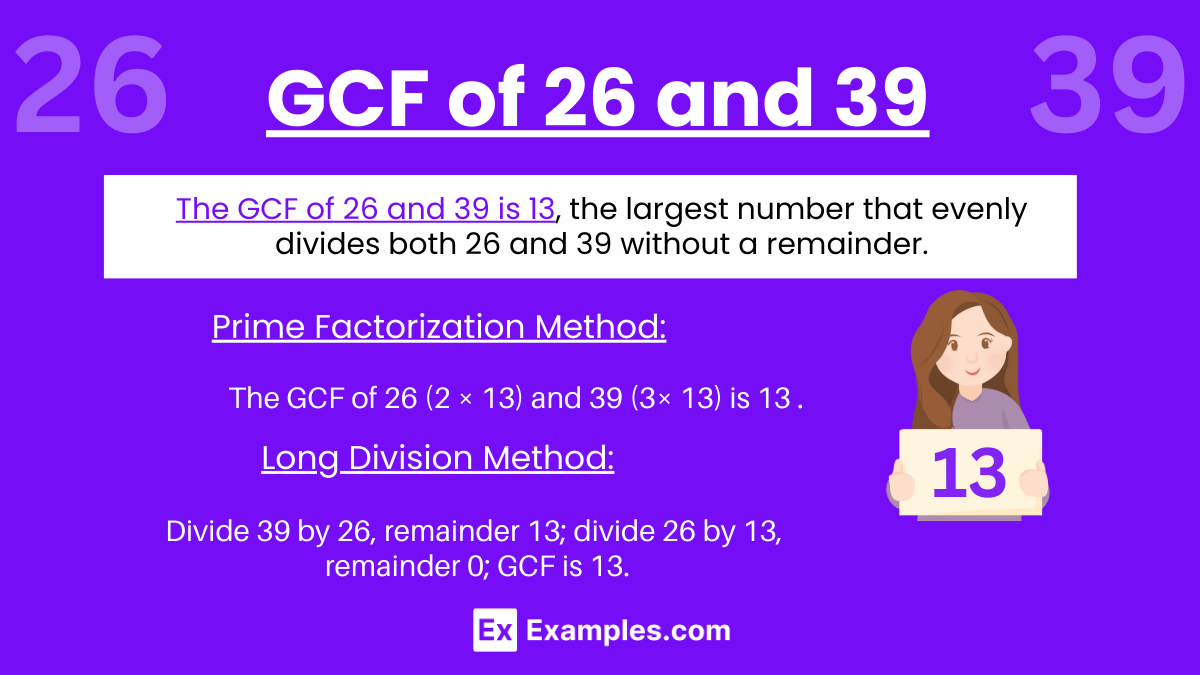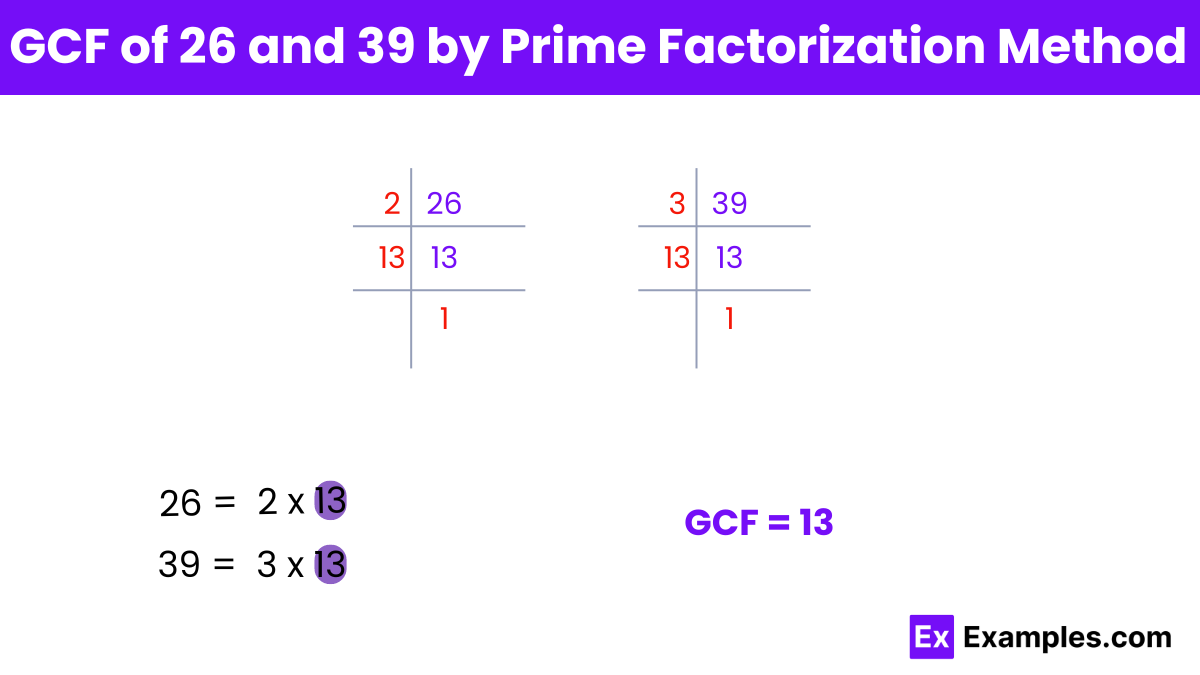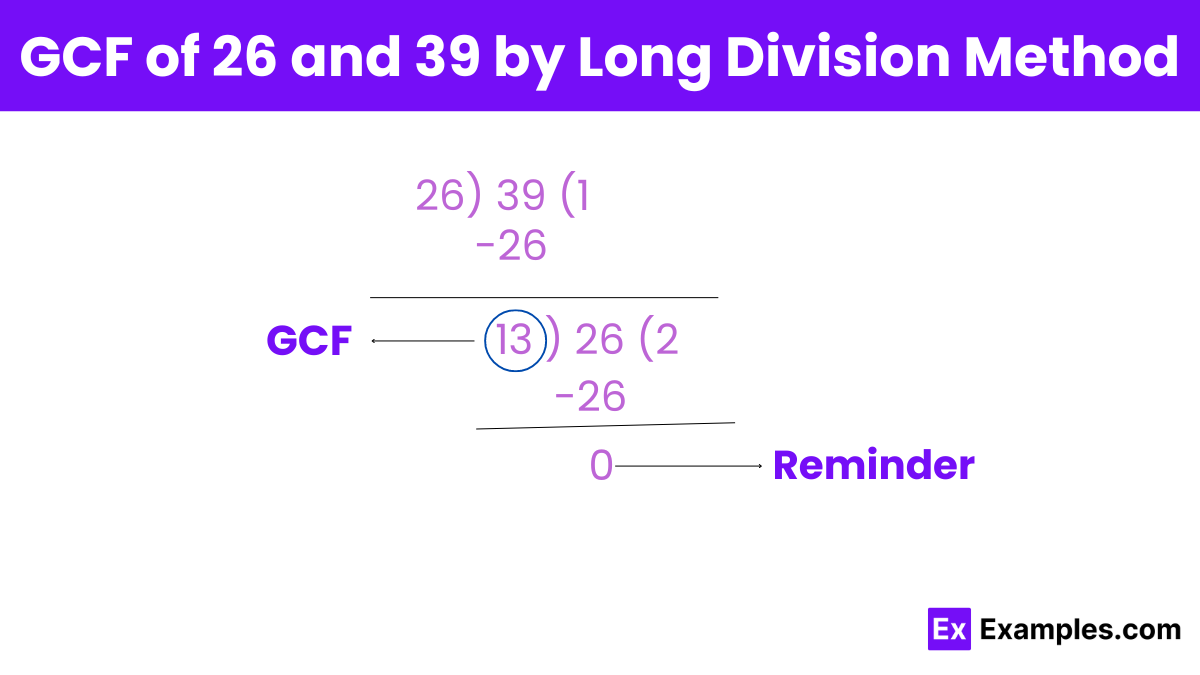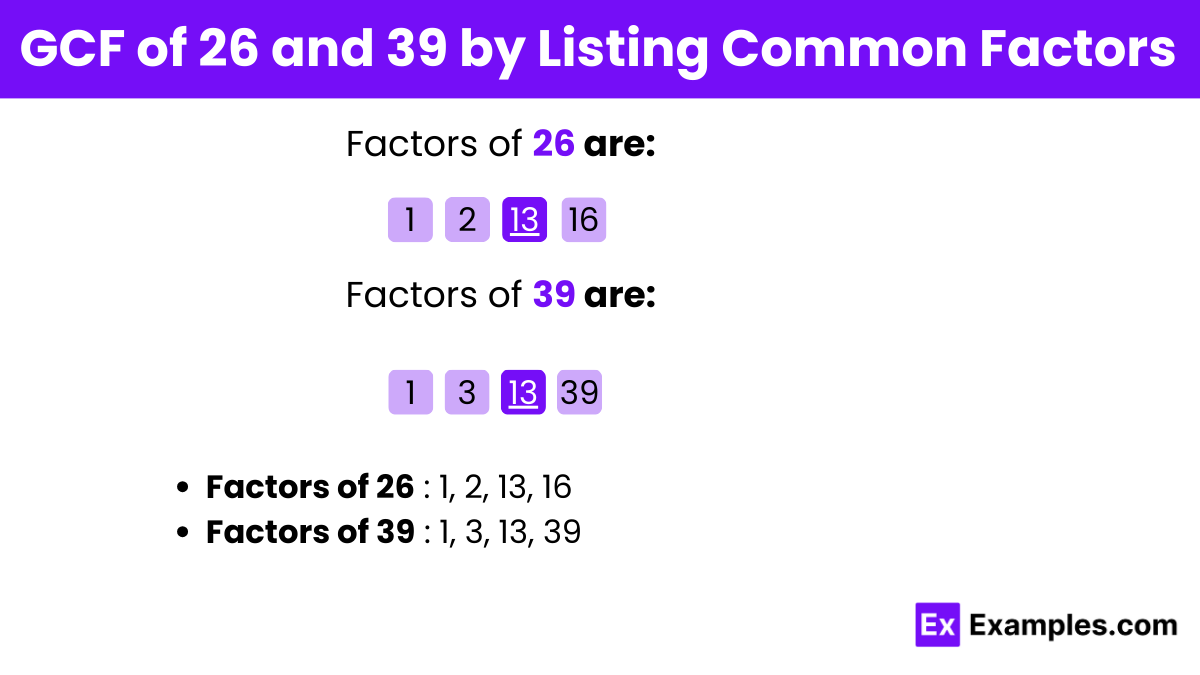What is the Greatest Common Factor (GCF) of 26 and 39?
1
2
13
26


To find the Greatest Common Factor (GCF) of 26 and 39, you can use several methods. By listing the factors of each numbers, we find that the factors of 26 are 1, 2, 13, and 26, while the factors of 39 are 1, 3, 13, and 39. The common factors are 1 and 13, with the greatest common factor being 13. Using the prime factorization method, 26 can be expressed as 2 × 13 and 39 as 3 × 13, confirming that 13 is the common prime factor. Lastly, using the long division method, dividing 39 by 26 gives a remainder of 13, and dividing 26 by 13 gives a remainder of 0, leading to the GCF of 13. Therefore, the GCF of 26 and 39 is 13.

To find the Greatest Common Factor (GCF) of 26 and 39 using the prime factorization method, follow these steps:
Prime factorization of 26:
26 = 2 × 13
Prime factorization of 39:
39 = 3 × 13
The common prime factor of 26 and 39 is 13.
Since the only common prime factor is 13, the GCF is 13.

To find the Greatest Common Factor (GCF) of 26 and 39 using the long division method, follow these steps:
39 ÷ 26 = 1 with a remainder of 13.
Now, we have 26 and 13.
26 ÷ 13 = 2 with a remainder of 0.
The last non-zero remainder is 13. So, the GCF of 26 and 39 is 13.

To find the Greatest Common Factor (GCF) of 26 and 39 by listing common factors, follow these steps:
Factors of 26:
1, 2, 13, 26
Factors of 39:
1, 3, 13, 39
Common factors of 26 and 39:
1, 13
The largest common factor is 13. Therefore, the GCF of 26 and 39 is 13.
The GCF helps determine the largest group size that can evenly divide quantities.
The product of 26 and 39 is 1,014.
Yes, using the relationship: LCM(a, b) = (a × b) / GCF(a, b).
Yes, the GCF is always less than or equal to the smaller number.
By dividing both numbers by the GCF to check if the quotients are integers.
The smallest common factor is 1.
Text prompt
Add Tone
10 Examples of Public speaking
20 Examples of Gas lighting
What is the Greatest Common Factor (GCF) of 26 and 39?
1
2
13
26
Which number is a common factor of both 26 and 39?
2
13
26
39
If the GCF of 26 and 39 is divided by 1, what is the result?
1
2
13
26
Which number has the same GCF with 26 as 39 does?
78
52
39
13
What is the GCF of 26, 39, and 52?
1
2
13
26
What is the result of subtracting the GCF of 26 and 39 from 20?
18
19
20
21
Which number is not divisible by the GCF of 26 and 39?
13
26
39
52
What is the least common multiple (LCM) of 26 and 39 if their GCF is 1?
26
39
1014
52
What is the GCF of 26 and 39 plus 5?
6
7
8
13
Which number is the greatest common factor of 26 and 39 if added to 5?
5
6
14
26
Before you leave, take our quick quiz to enhance your learning!

